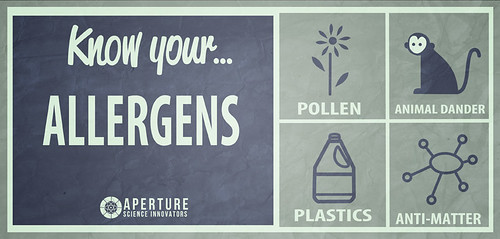
by Dr. Parang Mehta

Source: Flickr
Asthma is among the most common long term illnesses of humans. People with asthma have acute, severe episodes of breathlessness and wheezing that need treatment, sometimes as an emergency. Like any chronic illness, asthma lowers the quality of life and increases healthcare expenses.
Allergens often trigger asthma attacks. You can’t control outdoor allergens, but many triggers exist inside the home. With some knowledge and effort, you can reduce or eliminate them. Avoiding repeated doctor consultations, emergency room visits, and hospitalizations saves enormous expense. And, of course, having asthma under control greatly improves life and productivity.
What are the common asthma triggers?
Outdoor triggers vary from place to place. Pollens from grasses, weeds, and other vegetation are very common triggers. Industrial and other pollutants can also trigger asthma. However, an individual or family can’t do much about them.
Indoor triggers are present in the home. Unlike triggers like pollen they are not seasonal, and can cause problems for people with asthma throughout the year. The common ones are:
- House dust mite
- Cat antigen
- Dog antigen
- Cockroach antigen
Which trigger is responsible?
With so many potential allergens, how can you know which one is responsible for your (or your child’s) asthma attacks? Well, for this you have to go to an asthma or allergy specialist. They will test for possible allergies using laboratory and skin prick tests, and identify the culprit.
The results usually show a mix of outdoor and indoor allergens that are triggering your asthma attacks. These triggers increase asthma severity and the need for medication and medical services. Making the effort to reduce the triggers in your home will certainly reduce the number and severity of asthma attacks.
House Dust Mites
These are very small insects, called Dermatophagoides, that feed on the skin cells that are shed by humans. Most occupied homes abound in house dust mites, except those in high altitudes like the alpine regions. These tiny insects are never seen, but they release antigens that can be potent triggers of asthma in people who are sensitive to them.
What can you do to remove them? The creatures are all over – beds, living room furniture, floors, carpets, soft toys, etc. Reducing them requires some difficult measures:
- Encase mattresses and pillows in impermeable covers than can be wiped clean.
- Wash bed linen frequently in hot water.
- Vacuum regularly with a high-efficiency particulate air (HEPA) filter machine. Wet mopping is also good for removing allergens from the indoor environment.
- Remove tapestry from living room furniture, dining chairs, and other furniture. Opt for leatherette or similar impermeable covering.
- Remove soft toys, carpets, and other furnishings that hold the mites and their antigens.
- Chemicals called acaricides can be used while cleaning to kill the mites.
Dog and Cat Antigens
Cats are commonly implicated in asthma triggering. Eight allergens from the cat have been identified. The most common one, Fel d 1, is a strong allergen and is produced by all cats. There aren’t any hypoallergenic or allergen-free cats. Similarly, dogs also shed antigens in the houses where they live and can be responsible for triggering asthma attacks.
A diagnosis of allergy to the family pet is traumatic for the entire family. Everyone is attached to the pet, and the thought of sending it away is unbearable.
Unfortunately, that is the ideal solution. If asthma attacks are being triggered by exposure to animal antigens, giving the pet away is the best way to avoid the flare-ups.
Animal antigens persist in the home environment for weeks even after the animal has been removed. This can create significant misunderstanding and animosity in the family – even after sending a beloved pet away, the asthma symptoms persist.
If the family isn’t ready to send the pet away, some precautions help:
- Don’t allow the cat or dog in the bedroom of the person with asthma.
- Train the pet to stay off the furniture.
- Frequent shampooing can reduce the dander released into the indoor environment. This is difficult with cats, as they usually hate being bathed.
Keeping the pet outdoors helps only partially. The animal antigens are carried on clothes, and levels inside the home may be enough to trigger asthma.
Cockroaches
Cockroaches release very potent allergens into the home environment. People with asthma can have frequent attacks because of these creatures that roam all over the home, especially during the night hours. Good pest control is needed to rid the home of these insects.
Mold
Alternaria and other molds thrive in damp and dark places. They release allergens that can trigger allergies and asthma in some people. Improving the home to get rid of mold can be expensive, but is necessary.
Apart from the specific measures for the different allergens, some general measures help. Improving the quality of indoor air by the use of HEPA filters (0.3 microns) will benefit asthma control.
Keeping the house clean, avoiding smoking indoors, and doing the dusting and cleaning when the person with asthma is out of the home are common sense measures.
By diligently following the scientific methods of allergen reduction, people with asthma can have better disease control, reduce doctor visits, avoid emergency room visits and hospitalizations, and live a happier life.
(Dr. Parang Mehta writes about medicine and health for magazines, journals, and websites. He advises people not to look in the drugstore for solutions to every health problem. He also owns a website about children’s health, Mehta Childcare.)
References:
Al-Zayadneh EM, Alnawaiseh NA, Altarawneh AH, Aldmour IH, Albataineh EM, Al-Shagahin H, Alharazneh A, Alzayadneh E. Sensitization to inhaled allergens in asthmatic children in southern Jordan: a cross-sectional study. Multidiscip Respir Med. 2019 ; 14 : 37.
van Boven FE, Arends LR, Braunstahl GJ, van Wijk RG. A reintroduction of environmental mite allergen control strategies for asthma treatment and the debate on their effectiveness. Clin Exp Allergy. 2019 ; 49 : 400-409.





1 Trackback / Pingback
Comments are closed.